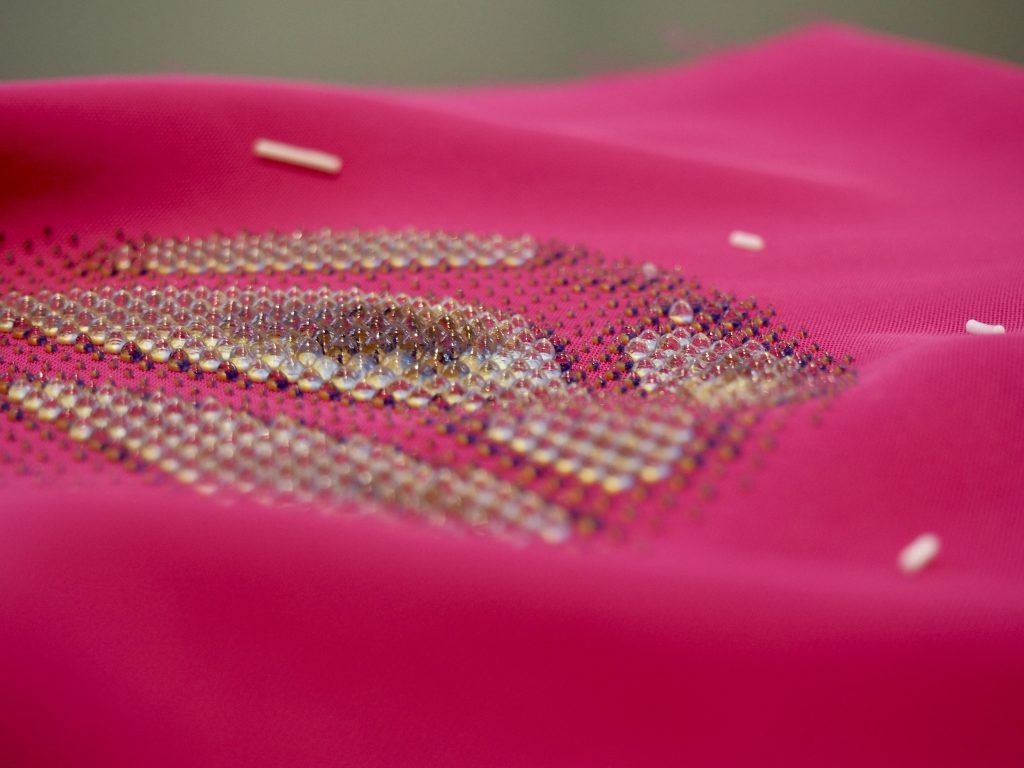The textile industry has historically been a leading sector in Catalonia, an industry that in recent years has chosen additive manufacturing as a new tool to continue innovating. 3D printing application in this sector is bringing changes and improvements in production processes, but it is also encouraging innovation in the final output that reaches the customer. In this post we want to explore, through some examples, how additive manufacturing is opening up new opportunities in the textile scene.
More efficiency and cost reduction
Production processes are the first to benefit from additive manufacturing application. In the textile industry case, as in other sectors, it has a lot to do with tools production and spare parts, which traditionally involved long production timings and high costs. With 3D printing, these processes are simplified and, above all, significantly accelerated. The key is that the organizations themselves can design and produce both the tooling and the spare parts in-house and adapting them to each of their needs.
In this way, the industry gains autonomy with regard to the production chains, which has a direct impact on its operational efficiency as well as on the costs reduction.
In this sense, some examples of this technology application in the textile sector are, in addition to the manufacture of tooling and tools, direct printing on fabrics, the creation of fabrics or meshes in order to design unique pieces, specially in the haute couture world, or the creation of sports shoe soles manufactured using 3D printing that we can already find on the market.

Customization and disruption
Beyond industrial operations, 3D printing also has a clear impact on the creation of new materials and textile outputs. From the point of view of the market consolidation this technology is a key element, because it makes it possible to offer innovative and highly customized products that differentiate the brands from the competitors and brings added value to the customer.
From direct clothing printing to the creation of unique fabrics to producing garments with complex patterns that change the way the customer perceives and relates to fashion or even creating materials with never-before-seen properties that have exceptional performance, the textile industry has found in additive manufacturing a great ally to continue innovating.
A reality to continue imagine
Possibilities of 3D printing in the textile sector are so great that it is easier to understand its scope if we take a look at real examples.
Imagine a waste that becomes raw material to shape new products. As dreamy as it may seem, there are already companies that turn complex waste as tires are into fashion accessories thanks to 3D printing. Earrings, bags and other accessories made on demand, allow us to give a second life to a material that until recently we would not have imagined as useful and it also allow us to imagine a slightly more sustainable world.
Huge brands are also jumping on the innovation bandwagon. An example of this is a well-known distribution group that is developing 3D fashion collections with which it has succeeded in shortening the development and distribution times of garments, reducing the number of samples and stock, saving costs and reducing the carbon footprint in production.
A similar case is the one of a sports chain equipment establishments that has started experimenting with 3D printing in their stores. Customers can customize some products, and they can decide not only the shape and design, but they are also given the possibility to incorporate text or some image that fits their wishes.
But not only big corporations; There are also examples of small entrepreneurs who promote businesses focused on customization. This is the case of a couple who have developed a business that manufactures fashion products using a specific bioplastic that comes from natural resources such as corn starch, sugar cane or beetroot. They only produce the necessary stock and therefore reduce waste and carbon footprint of their process to a minimum.
These and many other examples show that additive manufacturing is opening up new horizons for the textile industry which, although they may still seem distant to us, already portend a more sustainable and, above all, and exciting future in the fashion world. The question whether this technology will end up improving the operational efficiency of companies, reducing production costs and creating both unique parts and advanced materials remains to be seen. And this is the exciting part: don’t lose sight of the novelties that will appear in this industry.